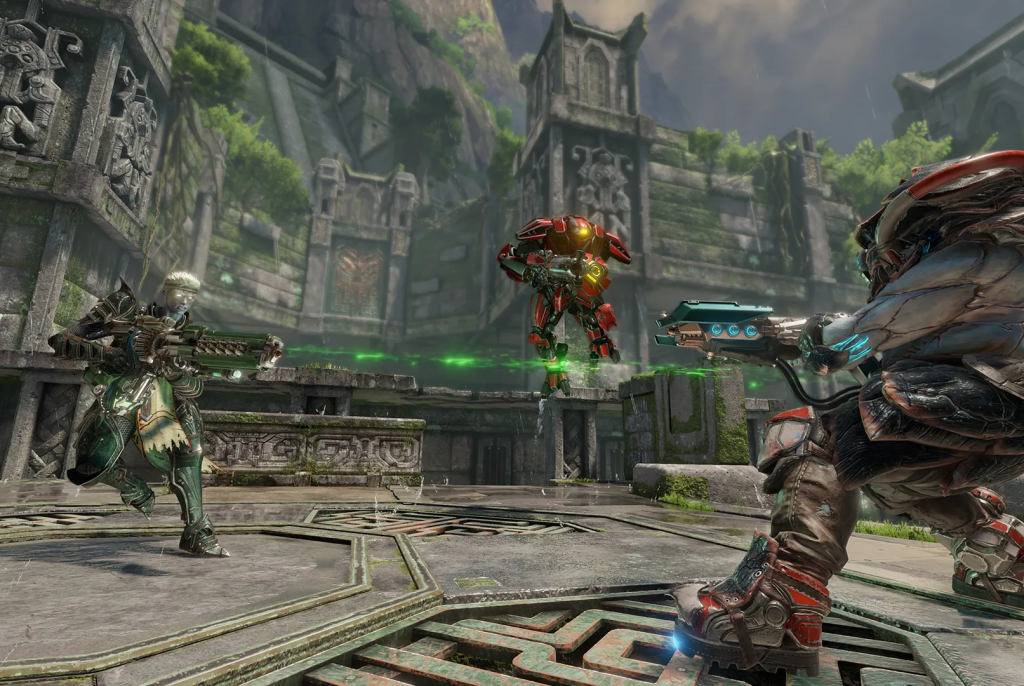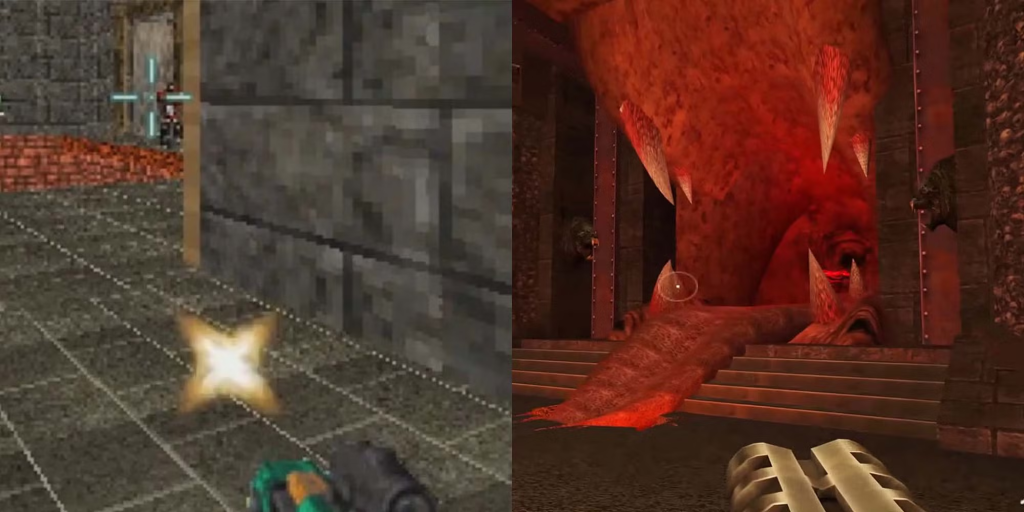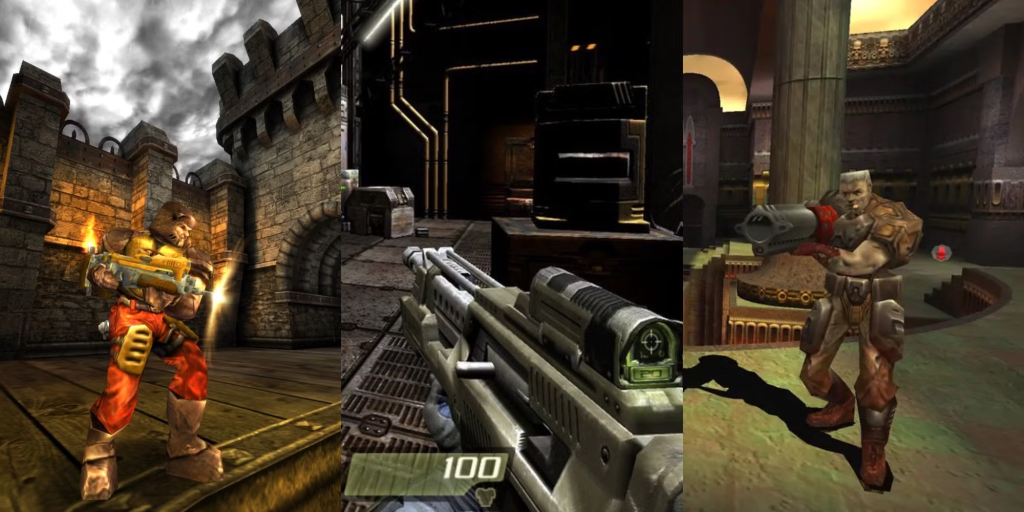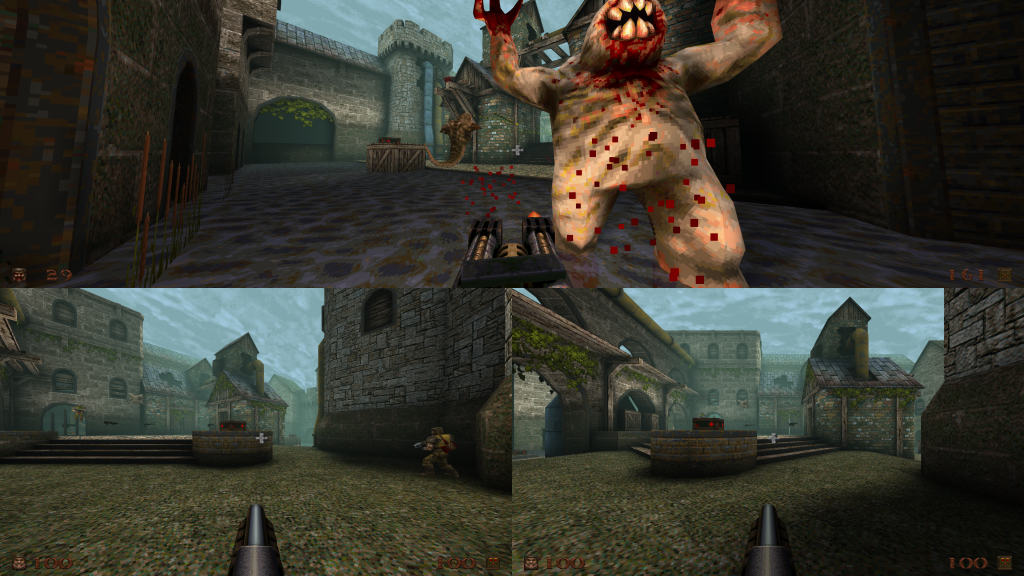Quake, developed by id Software and released in 1996, stands as a monumental achievement in the evolution of first-person shooters (FPS). Building upon the success of their previous titles like Doom, id Software introduced a game that not only showcased technological advancements but also set new standards in gameplay, atmosphere, and multiplayer experiences.
Innovative 3D Graphics and Atmospheric Design

One of Quake’s most groundbreaking features was its fully realized 3D engine. Unlike its predecessors, which utilized 2D sprites in a pseudo-3D environment, Quake rendered every element—from environments to enemies—in true 3D. This leap allowed for more complex level designs, intricate enemy animations, and a heightened sense of immersion. The game’s dark, gothic aesthetic, combined with dynamic lighting and eerie sound design, created an atmosphere that was both foreboding and captivating. As noted in a review, “Quake is a masterpiece on every level, with its ominous atmosphere, silky-smooth animation, incredibly well-balanced gameplay and level design, and unparalleled soundtrack.”
Engaging Gameplay Mechanics

Quake’s gameplay is characterized by its fast-paced action and strategic combat. Players navigate through labyrinthine levels, battling a diverse array of enemies using an arsenal of weapons, including shotguns, grenade launchers, and the iconic nailgun. The introduction of verticality in level design, facilitated by the true 3D engine, added a new dimension to combat, requiring players to be vigilant of threats from all angles. The game also introduced new control schemes, emphasizing the use of a mouse for aiming, which, while requiring an adjustment period, offered unparalleled precision once mastered.
Multiplayer Innovation

Quake was instrumental in popularizing online multiplayer gaming. Its support for internet-based deathmatches allowed players worldwide to engage in competitive play, laying the groundwork for the online gaming communities we see today. The game’s modifiability also encouraged a robust modding community, leading to the creation of numerous custom maps and gameplay modes.
Legacy and Influence

The impact of Quake on the gaming industry is profound. It not only set new technical standards but also influenced the design and development of subsequent FPS titles. Its emphasis on modding paved the way for user-generated content in games, fostering a culture of creativity and community involvement. The game’s success also demonstrated the viability of online multiplayer experiences, influencing countless titles that followed. As one reviewer noted, “Quake is a masterpiece on every level.”
Conclusion
Quake’s release marked a pivotal moment in gaming history, introducing innovations that would shape the future of the FPS genre. Its blend of technological advancement, atmospheric design, and engaging gameplay ensures its place as a classic, continuing to be celebrated by gamers and developers alike. Whether revisiting it for nostalgia or experiencing it for the first time, Quake remains a testament to the enduring appeal of well-crafted, immersive gaming experiences.

Leave a Reply